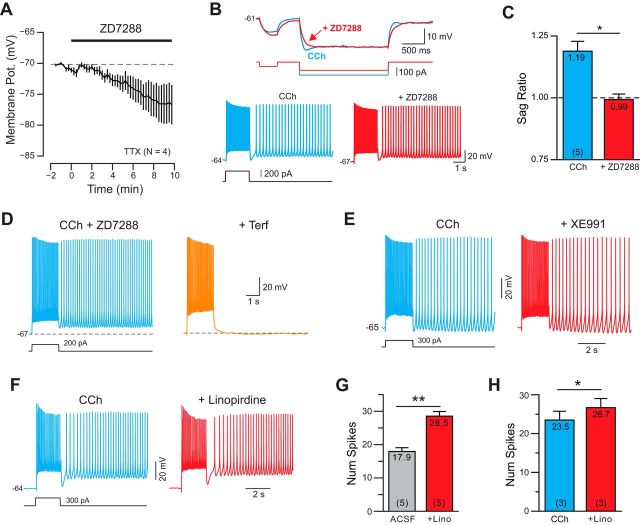Figure 5.
IH and IM currents are not required for persistent firing. A, Bath application of the specific IH blocker ZD7288 (10 μm) hyperpolarized L5 pyramidal cells. Symbols represent the mean ± SEM. B, Blockade of IH by ZD7288 eliminated the membrane potential sag evident in responses to hyperpolarizing current steps (top) but did not abolish persistent firing evoked by a depolarizing step (bottom, both representative of 5 of 5 cells tested). C, ZD7288 significantly reduced sag ratio. *p = 0.0257, T = 3.464, df = 4, paired t test; for details of sag ratio analysis, see Materials and Methods). ZD7288 did not block persistent firing in 5 of 5 cells tested (n.s., p = 1.00, Fisher's exact test). D, Blockade of IH by ZD7288 did not occlude the ability of Terf to abolish persistent firing (representative of 4 of 4 experiments). E, Attenuation of IM current with XE991 (10 μm) did not occlude persistent firing in CCh. F, + Linopirdine (30 μm), another M current blocker, also failed to abolish persistent firing. G, Plot of the increase in number of spikes evoked during the depolarizing step before and after + Linopirdine. **p = 0.0087, T = 4.797, df = 4. H, Plot of the increase in number of spikes with linopridine following CCh treatment. *p = 0.020, T = 7.024, df = 2. Both paired t tests.

